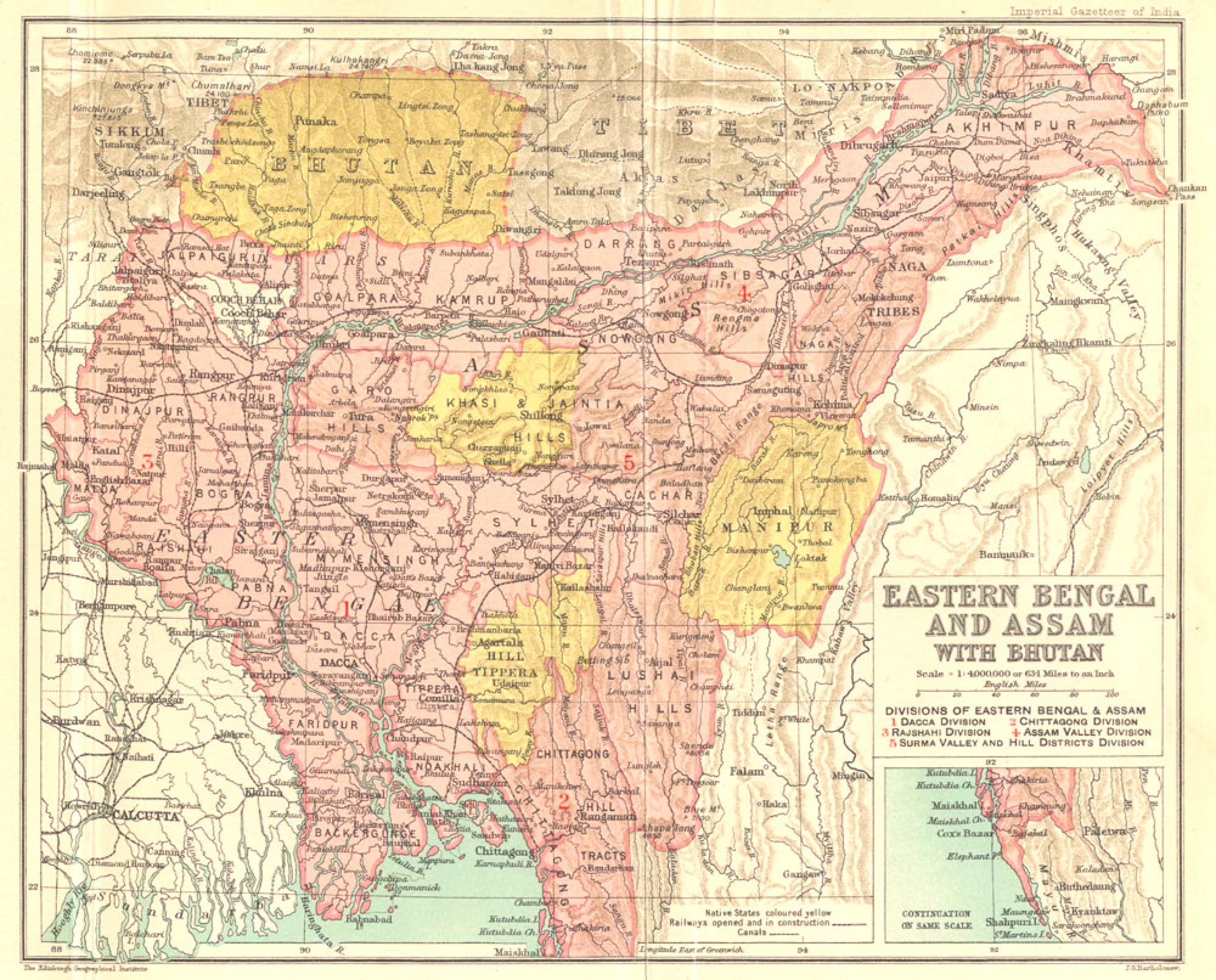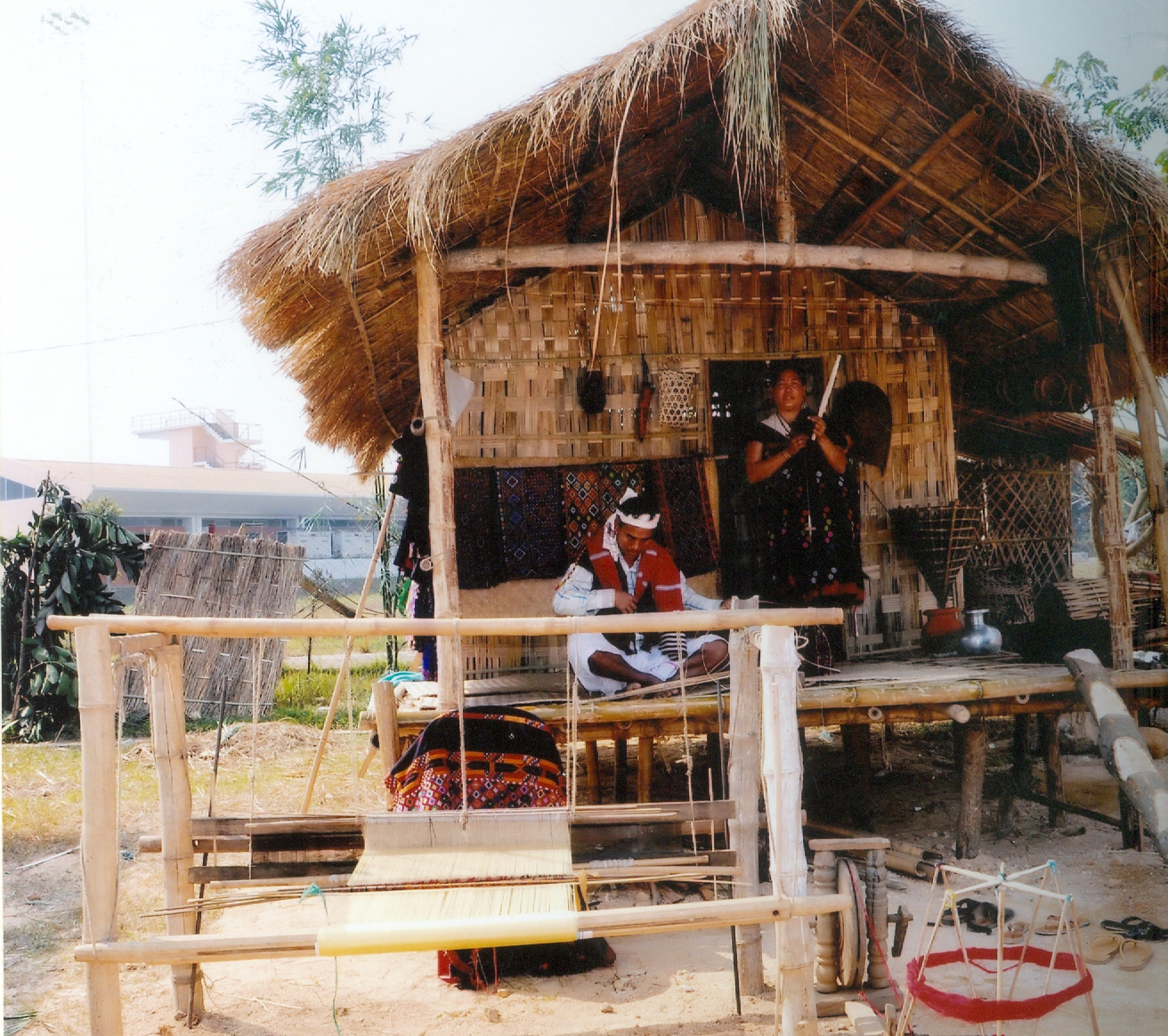|
Jack Francis Needham
Jack Francis Needham OBE (1842–1924) was a British officer in the Bengal Police who was posted in the Eastern Himalayan region during the late 19th and early 20th centuries. He authored several pioneering descriptions of Sino-Tibetan and Tai-Kadai languages in the area. Biography Jack Francis Needham (often referenced as J. F. Needham) was an Officer in the Bengal Police in the mid-to-late 19th century, later appointed Political Officer at the British outpost of Sadiya in Assam in 1882. Needham conducted a tour of the "Abor" (Adi) area in the Siang River Valley (modern-day East Siang District in Arunachal Pradesh state) in 1884, which established British relations with a small segment of the Tani hill tribes. Research and publications During his tenure in Sadiya Needham completed the first ever descriptions of several regional languages, including the Eastern Tani language Mising, the Sal language Singpho and Tai Khamti, as well as an ethnographic travelogue of his journey ... [...More Info...] [...Related Items...] OR: [Wikipedia] [Google] [Baidu] |
Sino-Tibetan Languages
Sino-Tibetan, also cited as Trans-Himalayan in a few sources, is a family of more than 400 languages, second only to Indo-European in number of native speakers. The vast majority of these are the 1.3 billion native speakers of Chinese languages. Other Sino-Tibetan languages with large numbers of speakers include Burmese (33 million) and the Tibetic languages (6 million). Other languages of the family are spoken in the Himalayas, the Southeast Asian Massif, and the eastern edge of the Tibetan Plateau. Most of these have small speech communities in remote mountain areas, and as such are poorly documented. Several low-level subgroups have been securely reconstructed, but reconstruction of a proto-language for the family as a whole is still at an early stage, so the higher-level structure of Sino-Tibetan remains unclear. Although the family is traditionally presented as divided into Sinitic (i.e. Chinese) and Tibeto-Burman branches, a common origin of the non-Sinitic languages ... [...More Info...] [...Related Items...] OR: [Wikipedia] [Google] [Baidu] |
Sadiya
Sadiya is a town in Tinsukia district, Assam. It was the capital of the Chutia Kingdom and after the downfall of the kingdom it became the seat of the ''Sadiya-khowa-Gohain'' of the Ahom kingdom. Extensive remains of buildings and fortifications built during the rule of the Chutias near Sadiya still point to the importance of the region in the past. Historically Sadiya referred to the Chutiya kingdom which included at times the districts of Lakhimpur, Dhemaji and Tinsukia. It is claimed to be the center of development of the eastern Assamese dialects, the inscription here are written in a Tai script. Its stands on a grassy plain, almost surrounded by forested Himalayan mountains, on the right bank of Lohit River which is locally (but erroneously) considered the main stream of the Brahmaputra River. The deepest point of the Brahmaputra River is located near this village. It is famous for a flower named ''satphul'' (the word means "blessing" or a "desert flower"), which is ... [...More Info...] [...Related Items...] OR: [Wikipedia] [Google] [Baidu] |
Assam
Assam (; ) is a state in northeastern India, south of the eastern Himalayas along the Brahmaputra and Barak River valleys. Assam covers an area of . The state is bordered by Bhutan and Arunachal Pradesh to the north; Nagaland and Manipur to the east; Meghalaya, Tripura, Mizoram and Bangladesh to the south; and West Bengal to the west via the Siliguri Corridor, a wide strip of land that connects the state to the rest of India. Assamese language, Assamese and Boro language (India), Boro are the official languages of Assam, while Bengali language, Bengali is an additional official language in the Barak Valley. Assam is known for Assam tea and Assam silk. The state was the first site for Oil well, oil drilling in Asia. Assam is home to the one-horned Indian rhinoceros, along with the wild water buffalo, pygmy hog, tiger and various species of Asiatic birds, and provides one of the last wild habitats for the Asian elephant. The Economy of Assam, Assamese economy is aided by w ... [...More Info...] [...Related Items...] OR: [Wikipedia] [Google] [Baidu] |
Adi People
Adi or ADI may refer to: Names and titles * Adi (mythology), an Asura in Hindu faith who appears in the Matsya Purāṇa * Adi (name), a given name in Hebrew and a nickname in other languages * Adi (title), a Fijian title used by females of chiefly rank Places * Adi (Khanapur), Belgaum District, Karnataka, India * Adi (Chikodi), Belgaum District, Karnataka, India * Ahmedabad Junction railway station, Ahmedabad, India (code ADI) * Adi, Israel, a community settlement in northern Israel * Adi Island, an island in West Papua, Indonesia * Arandis Airport, Arandis, Namibia (IATA: ADI) Organizations * Aerodynamics Inc., a small airline in the US * Aircraft Designs Inc, an aircraft design firm in Monterey, California * Alfred Deakin Institute, at Deakin University, in Geelong, Australia * American Documentation Institute, former name of the Association for Information Science and Technology * Analog Devices, Inc, producer of semiconductors (ADI is their symbol on the New Y ... [...More Info...] [...Related Items...] OR: [Wikipedia] [Google] [Baidu] |
Arunachal Pradesh
Arunachal Pradesh (, ) is a state in Northeastern India. It was formed from the erstwhile North-East Frontier Agency (NEFA) region, and became a state on 20 February 1987. It borders the states of Assam and Nagaland to the south. It shares international borders with Bhutan in the west, Myanmar in the east, and a disputed border with China in the north at the McMahon Line. Itanagar is the state capital of Arunachal Pradesh. Arunachal Pradesh is the largest of the Seven Sister States of Northeast India by area. Arunachal Pradesh shares a 1,129 km border with China's Tibet Autonomous Region. As of the 2011 Census of India, Arunachal Pradesh has a population of 1,382,611 and an area of . It is an ethnically diverse state, with predominantly Monpa people in the west, Tani people in the centre, Mishmi and Tai people in the east, and Naga people in the southeast of the state. About 26 major tribes and 100 sub-tribes live in the state. The main tribes of the state a ... [...More Info...] [...Related Items...] OR: [Wikipedia] [Google] [Baidu] |
Tani (tribes)
The Tani is a group of tribes from the Indian states of Arunachal Pradesh, Assam, and the Tibet Autonomous Region of China which share common Tani languages and certain common beliefs, primarily in Abotani as their primeval ancestor (Father of Human). The group comprises Nyishi, Adi, Apatani, Galo, Tagin, and Mising. They are also often referred to as the Tani group. With a population of 1.7 million, the Tani are one of the largest ethnic groups in North Eastern India. The Tani are scattered across larger regions of Arunachal Pradesh except Tirap, Changlang, Longding, West Kameng, and Tawang. The major part of the Mising tribe is scattered in the different district of Upper Assam. Thousands of Tani populace are also found across the border in Tibet Autonomous Region, China. The Chinese government recognise Tani as members of the Lhoba people. History Most of the residents of Arunachal Pradesh belongs to the five Tani tribes (Nyishi, Adi, Galo, Apatani, and Tagin) su ... [...More Info...] [...Related Items...] OR: [Wikipedia] [Google] [Baidu] |
Mishing Language
Miri or Mising, also known as Plains Miri, is a Tani language spoken by the Mising people. There are 629,954 speakers (as per Census of India, 2011), who inhabit mostly the Lakhimpur, Sonitpur, Dhemaji, Dibrugarh, Sibsagar, Jorhat, Majuli, Golaghat, Tinsukia districts of Assam and also some parts of Arunachal Pradesh. The primary literary body of Mising is known as ' Mising Agom Kébang (Mising Language Society)'. The Mising, Padam and Minyong The Minyong are a sub-group of the Adi people, a tribal people living in Arunachal Pradesh, India. The Minyong are found in East Siang, Siang and West Siang West Siang (Pron:/ˈsjæŋ or ˈsɪæŋ/) is an administrative district in the stat ... speak dialects of the same language. Phonology Consonants Vowels Geographical distribution ''Ethnologue'' gives the following locations for Mising speakers. The Hill Miri live in Arunachal Pradesh, while the Plains Miri live in Assam. * Assam: North Lakhimpur, S ... [...More Info...] [...Related Items...] OR: [Wikipedia] [Google] [Baidu] |
Sal Languages
The Sal languages are a branch of Sino-Tibetan languages spoken in northeast India, parts of Bangladesh, and Burma. Alternative names '' Ethnologue'' calls the group "Jingpho–Konyak–Bodo", while Scott DeLancey (2015) refers to it as "Bodo-Konyak-Jinghpaw" (BKJ). Glottolog lists this branch as �Brahmaputran (brah1260)��. Classification within Sino-Tibetan Scott DeLancey (2015)DeLancey, Scott. 2015. "Morphological Evidence for a Central Branch of Trans-Himalayan (Sino-Tibetan)." ''Cahiers de linguistique - Asie oriental'' 44(2):122-149. December 2015. considers the Sal languages, which he refers to as ''Bodo-Konyak-Jinghpaw'' (BKJ), to be part of a wider Central Tibeto-Burman group. Internal classification noted that the Bodo–Garo, Konyak, and Jingpho (Kachin) languages, as well as the extinct Chairel language, shared distinctive roots for "sun" and "fire". proposed a grouping of the Bodo–Garo, Konyak (Northern Naga), and Jingpho languages, characterized by seve ... [...More Info...] [...Related Items...] OR: [Wikipedia] [Google] [Baidu] |
Singpho Dialect
Singpho is a dialect of the Jingpho language spoken by the Singpho people of Arunachal Pradesh and Assam, India. It is spoken by at least 3,000 people. "Singpho" is the local pronunciation of "Jingpho". The Jingpho/Singpho (Jinghpaw, Chingp'o), or Kachin, language is a Tibeto-Burman language mainly spoken in Kachin State, Myanmar and Yunnan Province, China. The term Kachin language can refer either to the Jingpho language or to a group of languages spoken by various ethnic groups in the same region as Jingpho: Lisu, Lachit, Rawang, Zaiwa, Lhaovo, Achang (Ngo Chang), and Jingpho. These languages are from distinct branches of the highest level of the Tibeto-Burman family. The total estimated native speakers are 950,000 (2001 census). Singpho is spoken the eastern extreme of northeastern India, such as Bordumsa Circle, Tirap District, Arunachal Pradesh, and also in nearby parts of Lohit District. Singpho lacks the system of person-number agreement on an auxiliary particle ... [...More Info...] [...Related Items...] OR: [Wikipedia] [Google] [Baidu] |
Tai Languages
The Tai or Zhuang–Tai languages ( th, ภาษาไท or , transliteration: or ) are a branch of the Kra–Dai language family. The Tai languages include the most widely spoken of the Tai–Kadai languages, including Standard Thai or Siamese, the national language of Thailand; Lao or Laotian, the national language of Laos; Myanmar's Shan language; and Zhuang, a major language in the Southwestern China's Guangxi Zhuang Autonomous Region, spoken by the Zhuang (壯) people, the largest minority ethnic group in China, with a population of 15.55 million, living mainly in Guangxi, the rest scattered across Yunnan, Guangdong, Guizhou and Hunan provinces. Name Cognates with the name ''Tai'' (''Thai, Dai'', etc.) are used by speakers of many Tai languages. The term ''Tai'' is now well-established as the generic name in English. In his book '' The Tai-Kadai Languages'' Anthony Diller claims that Lao scholars he has met are not pleased with Lao being regarded as a Tai languag ... [...More Info...] [...Related Items...] OR: [Wikipedia] [Google] [Baidu] |



.jpg)

